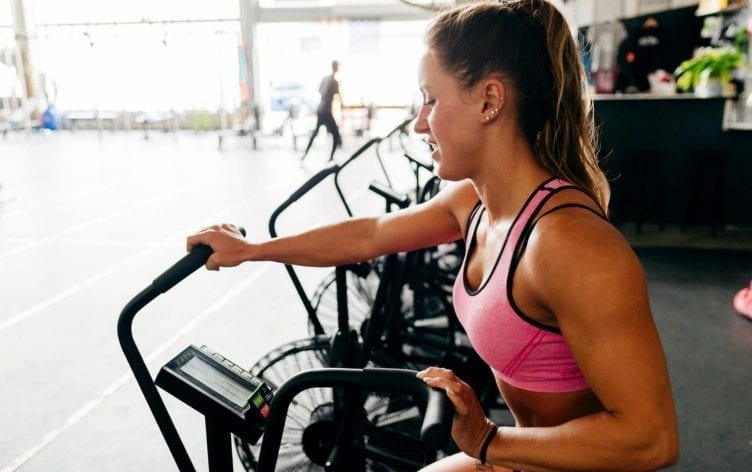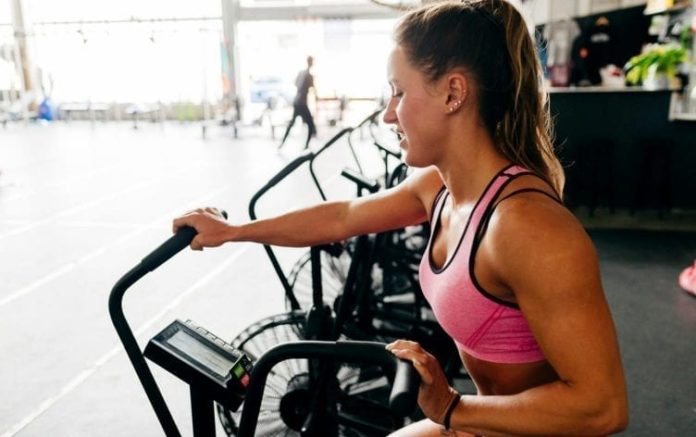
Cardio has long been touted as a fat-loss solution, and many people assume they need to slog away on the treadmill or elliptical for an hour every day to budge the scale.
But while some people see fat loss results by incorporating cardio into their routines, is cardio actually necessary for fat loss?
The short answer is: no.
At the end of the day, fat loss is a matter of calories: You can eat fewer calories than your body needs to maintain its current weight, burn more calories than your body needs through physical activity or take advantage of both strategies.
THE CARDIO-DIET COMBO
That said, research shows combining exercise with a healthy diet may be the best option for fat loss, as demonstrated by a study in Obesity.
In the study, overweight and obese postmenopausal women followed either a diet-only program, an exercise-only program or a combined exercise and diet program for a year. The women who followed the combination program saw the greatest fat-loss results, while the women who followed the exercise-only program saw the least fat-loss results (10.8% versus 2.4% fat loss). Interestingly, the women in the diet-only program also saw significant results by the end of the year (8.5%).
What’s also interesting is the women in the exercise-only and combination programs performed aerobic exercise (Read: cardio). The sessions started on the lower end and peaked at 45 minutes a day, five days per week.
However, as we saw, women in the combination group lost only a little more fat than the women in the diet-only group. In this sense, cardio is not necessary for fat loss, but it can help you reach your goal when combined with a healthy diet.
Still, is cardio, in general — and steady-state cardio, in particular — the best exercise option for fat loss? Probably not.
THE BETTER FAT-LOSS EXERCISE SOLUTION
Instead of relying on cardio to help you shed fat, look to its counterpart: Resistance training.
“Resistance training, particularly the type of resistance training that raises the heart rate and involves multiple-joint complex exercises, may be better at converting fat to fuel as well as helping maintain muscle mass,” says Jennifer Novak, MS, a certified strength and conditioning specialist and performance recovery coach and founder of PEAK Symmetry Performance Strategies.
Complex multi-joint resistance exercises are exercises that recruit multiple joints. Common examples of these types of exercises include squats, deadlifts, push presses and bent-over rows. In contrast with single-joint exercises like biceps curls and leg extensions, multi-joint exercises recruit a variety of big muscle groups — and the more muscles you recruit, the greater the challenge and calorie burn.
To raise your heart rate during resistance training, you have to manipulate the intensity of the exercises. This could mean lifting heavy weights, performing strength exercises at a faster pace, and/or limiting rest periods.
High-intensity interval training (HIIT) is a popular alternative to steady-state cardio (a landmark study even shows it’s more effective for improving aerobic and anaerobic fitness), “yet it still may not do much for building and maintaining muscle mass,” Novak says. Incorporating strength exercises into a HIIT workout, on the other hand, can help you blend the benefits of cardio and strength into a single session.
Intense strength-training workouts can also help you continue burning calories long after your workout is over. “Resistance training, if it takes the form of a circuit, a complex or another type of metabolic conditioning, can bring the body into an energy system that prefers fat as fuel, and create what’s called an ‘afterburn’ effect,” Novak says. (Circuits, complexes and metabolic conditioning all involve performing strength exercises back-to-back, at a faster pace and/or with limited rest in between sets.)
This “afterburn” is also known as excess post-exercise oxygen consumption (EPOC), and refers to the extra work your body has to do repair your muscles and tissues after an intense workout, which requires more energy (i.e., calories). “More calories are utilized for a certain amount of time after the exercise [session] is completed,” Novak says. (A study in the European Journal of Applied Physiology suggests your caloric burn at rest remains elevated up to 72 hours after a workout.)
If your goal is fat loss, you really want to be sure you’re building up your muscles. The reason: Muscle eats up more energy (i.e., calories) per pound than fat (roughly 7–13 calories a day per pound of muscle versus 2–5 for fat), and having more muscle on your frame may help you lose fat and maintain weight over time. “Even though both fat and muscle tissue are ‘active’ metabolically, gaining and keeping a healthy level of muscle tissue is ‘more expensive,’ meaning that a body with adequate muscle mass will likely burn more calories at rest, keeping the body fat ratio more manageable over time,” Novak says.
CARDIO AND STRENGTH TRAINING FOR A HEALTHY LIFESTYLE
While cardio isn’t necessary for fat loss, both cardio and strength training are important components to include in any healthy lifestyle. “Cardio should not be eliminated from anyone’s regular fitness routine, as it remains an important part of cardiovascular health,” Novak says. Meanwhile, resistance training improves brain function, balance, bone density and reduces your risk of falling as you age, she notes.
Be sure you’re checking off the cardio and strength training boxes every week. At the very least, aim for 2 1/2 hours of moderate-intensity cardio like brisk walking or jogging, or 1 hour and 15 minutes of high-intensity cardio like HIIT every week. Perform a full-body strength routine at least two days per week.
































